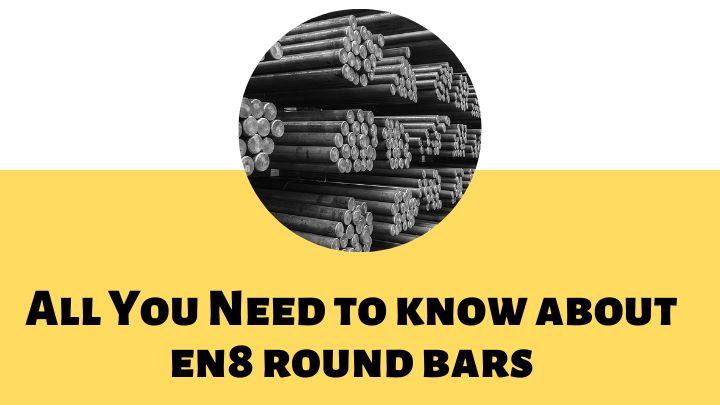In the unforgiving world of oil & gas operations, every hour of downtime carries a staggering cost. Imagine a drilling rig in Gujarat halted by a snapped drill string, or a pressure vessel in Maharashtra compromised by an undetected crack. Across India and global energy hubs, failure investigations repeatedly highlight one overwhelming truth: over 90% of breakdowns in oil & gas equipment are rooted in selecting the wrong steel grade. The difference between operational success and financial disaster often comes down to proper understanding and application of alloy steels like SAE 4140.
This in-depth blog post unpacks why SAE 4140, despite being a robust alloy steel, can become a weak link if not specified or treated correctly for demanding oil & gas environments. Whether you’re an equipment manufacturer in Tamil Nadu, a process engineer for offshore rigs in Andhra Pradesh, or an international supplier targeting the USA, Germany, or the UAE, it’s vital to recognize both the strengths and failure risks of this widely used material. As trusted alloy steel suppliers, Dhand Steels provides technical guidance needed to avoid catastrophic failures.
An Introduction to SAE 4140 Steel
SAE 4140 is a chromium-molybdenum alloy steel renowned for its high tensile strength, toughness, and wear resistance. Its balanced composition enables it to be heat-treated, achieving superior mechanical properties for high-strength, fatigue-loaded components. Applications are widespread—shafts, axles, drill collars, blow-out preventer parts, and downhole tools—across the aerospace, oil & gas, and heavy engineering sectors.
Its popularity among high strength steel manufacturers is no accident: it marries cost-effectiveness with performance when specified and processed properly. However, in the corrosive, pressure-intense, and hydrogen-rich context of oil & gas extraction, even this alloy’s formidable reputation can be compromised by misapplication.
Why SAE 4140 Fails in Oil & Gas: Real-World Failure Modes
1. Sulfide Stress Cracking (SSC)
SSC is a dangerous form of hydrogen embrittlement commonly occurring in sour gas (H2S) fields. Atomic hydrogen infiltrates the steel, leading to brittle cracking—often without prior warning. This is frequently seen in high-strength, improperly tempered SAE 4140 fasteners, pipes, and tool joints exposed to H2S.
Real-World Example:
A wellhead flange made from inadequately specified SAE 4140 in a Rajasthan oil field failed, leaking hydrocarbons and causing costly downtime. Post-failure analysis revealed micro-cracks propagated through hard martensitic zones not suited for sour service, a direct result of exceeding the maximum allowed hardness per NACE MR0175 standards.
2. Hydrogen Embrittlement
Beyond sour service, hydrogen embrittlement arises from manufacturing (e.g., electroplating, pickling) or residual hydrogen in service. Subsurface hydrogen atoms cause delayed catastrophic failures under sustained load. Even a turbo pump shaft in a refinery—perfectly machined from SAE 4140—can shatter weeks after installation if the steel was not properly batch-tested and stress-relieved.
3. Pitting and Crevice Corrosion
SAE 4140 is not stainless; its chromium content offers only moderate corrosion resistance. In offshore saline environments, mud pump components and subsea connectors are vulnerable to pitting—especially if minor surface damage or microstructural non-uniformity exists. These pits become crack initiation points, reducing fatigue life drastically.
4. Fatigue Failure Under Combined Loading
Equipment like rotary drill pipes and BOPs (blow-out preventers) experience intense, fluctuating mechanical loads. In the presence of micro-cracks (often formed by corrosion or embrittlement), fatigue failure occurs significantly faster than design calculations predict. Inadequate material quality from suppliers or improper heat treatment can render even well-designed 4140 components unfit for service.
Prevention: Selecting and Using SAE 4140 Steel Correctly
Preventing costly breakdowns means getting both the steel grade and its treatment right. Here are failure prevention best practices for SAE 4140 steel India:
- Adhere to Standards: Comply with NACE MR0175/ISO 15156 for sour service; require certifications confirming hardness (≤22 HRC) and microstructure from your steel supplier.
- Heat Treatment Integrity: Work with suppliers like Dhand Steels who rigorously control quenching, tempering, and stress-relieving cycles. Always review batch-specific reports.
- Material Traceability: Insist on MTCs (Material Test Certificates) and traceability for every alloy steel shipment entering critical oil & gas or aerospace service.
- Environmental Suitability: Conduct service condition analysis. For highly saline, acidic, or hydrogen-rich environments, consider higher alloy or clad solutions—and consult with experienced high strength steel manufacturers.
Dhand Steels: Your Technical Partner for Reliable Equipment
With years supplying the Indian energy and process sectors—and exporting to Europe, Gulf, and South-East Asia—Dhand Steels offers expertise, not just steel. Whether you build valves in Haryana or supply pumps to Malaysia and Japan, ensure your steel products supplier understands the complex interplay of metallurgy and critical service risks.
Our commitment: certified, application-specific SAE 4140 steel India, backed by technical insights, responsive support, and a reputation for reliability across India’s industrial heartlands and global markets.
Contact Dhand Steels
Address:
Unit- I : Plot # 30, Guru Gobind Singh Industrial Enclave, vill. Umedpur, Sahnewal Dehlon road, Sahnewal, Ludhiana
Get in Touch:
- Email: solutions@dhandsteels.com, nikhil.dhand@dhandsteels.com
- Phone: +91-6283-838-475, +91-7814-705-181
- WhatsApp: http://wa.me/916283838475
Find Us:
- Directions: Get Directions on Google Maps



Comments
0 Comment On Post